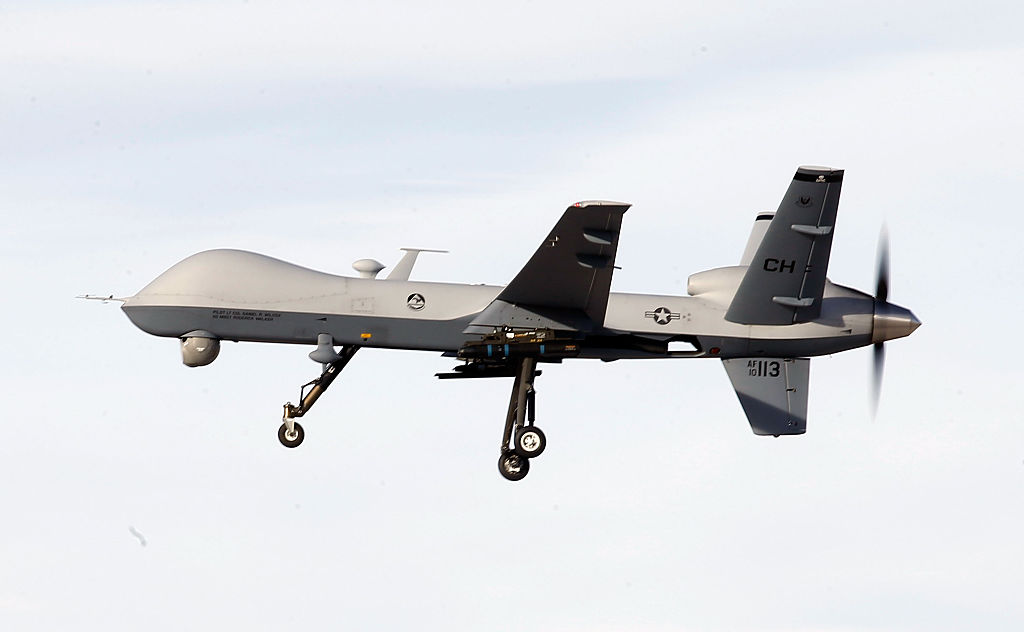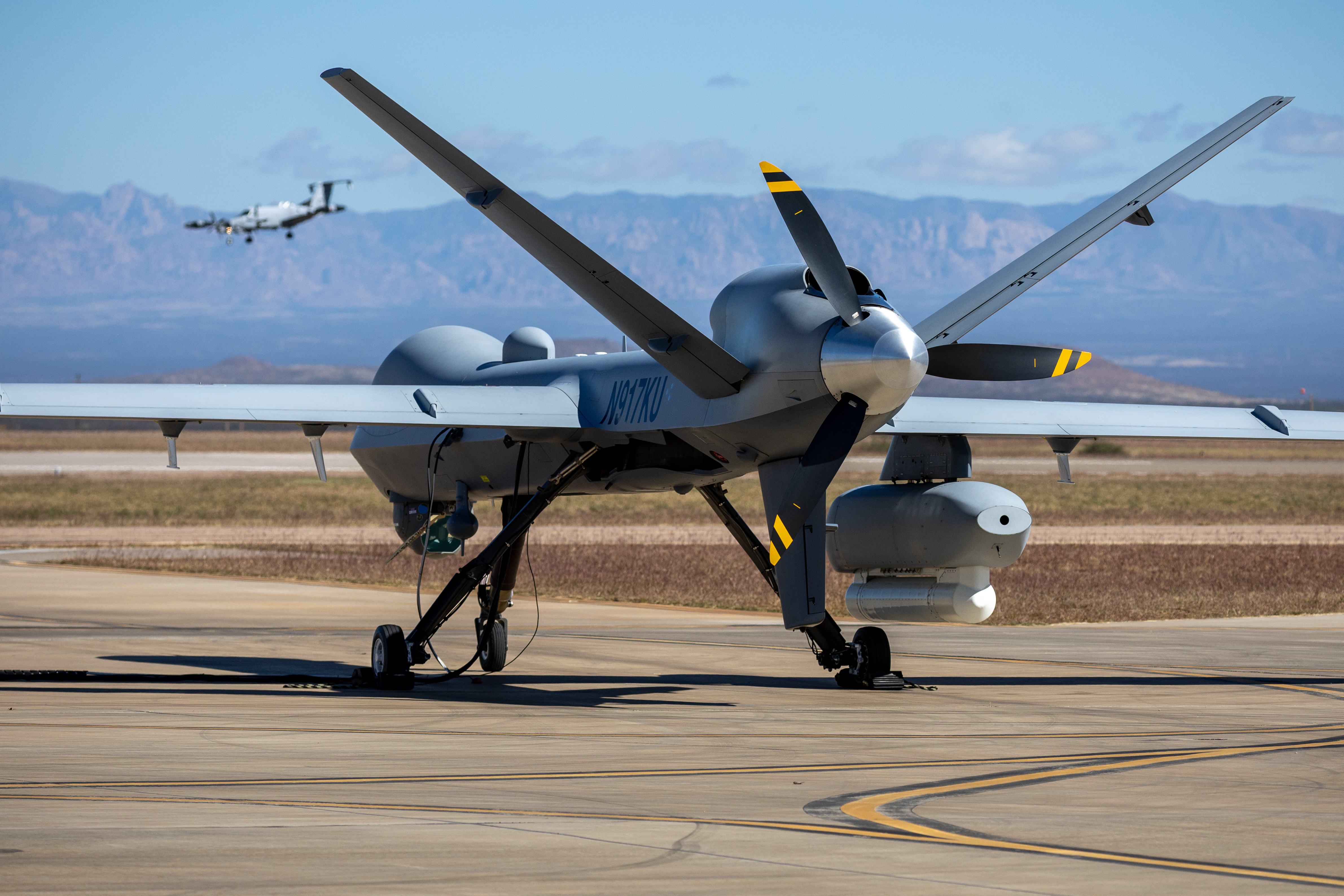KYIV, Ukraine (AP) — The Pentagon on Thursday released video of what it said was a Russian fighter jet dumping fuel on a U.S. Air Force surveillance drone before the warplane clipped the drone’s propeller in international airspace, leading to its crash in the Black Sea and raising tensions between Moscow and Washington over the war in Ukraine.
The 42-second video shows a Russian Su-27 approaching the back of the MQ-9 Reaper drone and beginning to release fuel as it passes, the Pentagon said. Dumping the fuel appeared to be aimed at blinding its optical instruments and driving it out of the area.’
On a second approach, either the same jet or another Russian fighter that had been shadowing the MQ-9 struck the drone’s propeller, damaging one blade, according to the U.S. military. The U.S. military said it ditched the MQ-9 Reaper in the sea Tuesday.
The video excerpt released by the Pentagon does not show events before or after the apparent fuel-dumping confrontation and does not show the Russian warplane striking the drone.
Get top local stories in San Diego delivered to you every morning. Sign up for NBC San Diego's News Headlines newsletter.
Earlier this week, the Pentagon said the Russian jets flew around and in front of the drone several times for 30 to 40 minutes, before colliding with the unmanned aerial vehicle. They said Thursday's declassified video had been edited for length, "however, the events are depicted in sequential order."
Russia said its fighters didn’t strike the drone and claimed the unmanned aerial vehicle went down after making a sharp maneuver.
Asked Thursday if Russia would try to recover the drone debris, Kremlin spokesman Dmitry Peskov told reporters the decision was up to the military. “If they consider it necessary to do so in the Black Sea for the benefit of our interests and our security, they will do it,” he said. Nikolai Patrushev, the secretary of Russia’s Security Council, said Wednesday that an attempt would be made.
U.S. officials have expressed confidence that nothing of military value would remain from the drone even if Russia managed to retrieve the wreckage. They left open the possibility of trying to recover portions of the downed $32 million aircraft, which they said crashed into waters that were 4,000 to 5,000 feet (1,200 to 1,500 meters) deep, although the U.S. does not have any ships in the area.
Russia and NATO member countries routinely intercept each other’s warplanes, but the drone incident marked the first time since the Cold War that a U.S. aircraft went down during such a confrontation, raising concerns it could bring the United States and Russia closer to a direct conflict.
Moscow has repeatedly voiced concern about U.S. intelligence flights near the Crimean Peninsula, which Russia seized from Ukraine in 2014 and illegally annexed.
The top U.S. and Russian defense and military leaders spoke Wednesday about the destruction of the drone, underscoring the event's seriousness.
The calls between U.S. Defense Secretary Lloyd Austin and Russian Defense Minister Sergei Shoigu, as well as between Joint Chiefs of Staff Chairman Gen. Mark Milley and Gen. Valery Gerasimov, chief of Russian General Staff, were the first since October.
Three U.S. officials familiar with the intelligence tell NBC News the aggressive actions by the Russian military fighter jets were approved at the highest levels of the Kremlin.
The Russian Defense Ministry said in its report of the call with Austin that Shoigu accused the U.S. of provoking the incident by ignoring flight restrictions the Kremlin had imposed because of its military operations in Ukraine.
The Kremlin argues that by providing weapons to Ukraine and sharing intelligence information with Kyiv, the U.S. and its allies have effectively become engaged in the war, now in its 13th month.
Such U.S. actions “are fraught with escalation of the situation in the Black Sea area,” the Russian Defense Ministry said, warning that Moscow “will respond in kind to all provocations.”
The MQ-9, which has a 66-foot (20-meter) wingspan, includes a ground control station and satellite equipment. It is capable of carrying munitions, but Air Force Brig. Gen. Pat Ryder, a Pentagon spokesperson, would not say whether the ditched drone had been armed.
Air Force Brig. Gen. Pat Ryder, a Pentagon spokesperson, said the incident occurred at 7:03 a.m. Central European time (0603 GMT; 2:03 a.m. EST) over international waters, and well clear of Ukraine, after the Russian jets had flown in the vicinity of the drone for 30 to 40 minutes.
There did not appear to be any communications between the aircraft before the collision, Ryder added.



